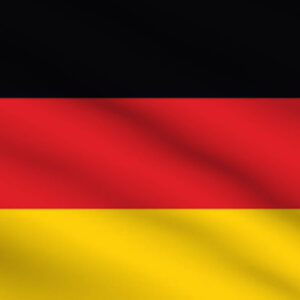
Iron (Fe-Content)
87 500 metr. t


87 500 metr. t

509 193 metr. t

450 metr. t

60 metr. t
Germany’s mining sector has traditionally been one of the largest in Europe, with a heavy focus on the production of lignite or brown coal. The government has announced ambitious targets for the German power sector, including the acceleration of the coal phase-out from 2038 to 2030. While the country has taken up all possible initiatives to scale down and close its coal-fired power plants gradually, while also stopping extraction and burning hard coal deposits around the country, several research groups and companies are looking to extract lithium using geothermal drilling. In this approach, hot lithium-rich brine is pumped to the surface from several thousand meters below ground, water is used to generate electricity and lithium is extracted and refined to a grade suited for batteries. This is potentially a huge boon for the country’s green transition, as it looks ahead to diversify its supply of the materials needed to build green technologies, like electric cars and wind turbines. Despite having rich deposits of lithium in the country, especially in the Upper Rhine Valley, researchers and companies do not agree with how quickly industrial-scale extraction can begin and how economically viable it will be, though the companies hope to exploit the resource, with plans to kick-off extraction in 2025.
The future use of coal is at the centre of Germany’s political debate on the energy transition and its efforts to mitigate climate change after the country has seen a stagnation in greenhouse gas emissions despite the growing use of renewable sources. At the moment Germany is still the biggest producer of brown coal but closed down its last hard coal mines in 2018. If the government follows up on the proposal of its multi-stakeholder coal commission, the last coal plants and lignite mines could close in 2038. This factsheet compiles background information on the lignite and hard coal industry in Germany.
Power generation from coal has long served the German industry, and despite Germany’s reputation as an ecological role model, cheap, carbon-intensive fossil fuel is still an important pillar of the country’s power supply. Hard coal and lignite have a share of 35.3 per cent in German power production (compared to 35.2% from renewables, 11.7% from nuclear and 12.8% from natural gas in 2018). Altogether, the energy sector is responsible for a large share of Germany’s greenhouse gas emissions (37 per cent).
A phase-out of coal power is at the heart of debates on how Germany can reach its climate targets, particularly after the Ministry for Environment warned in autumn 2017 that the country was falling short of its 2020 emissions reduction target by a wide margin. In February 2019 a multi-stakeholder coal exit commission set up by the energy ministry suggested a pathway to a phase-out of the fossil fuel by 2038. The proposal now has to be written into laws which have to be passed by parliament.